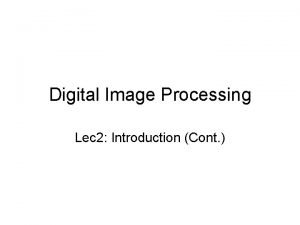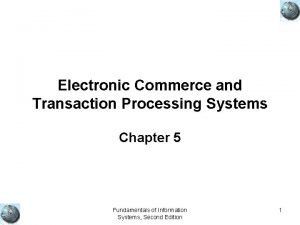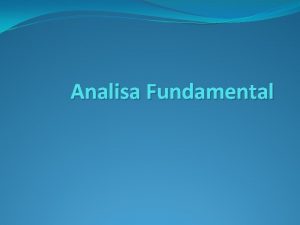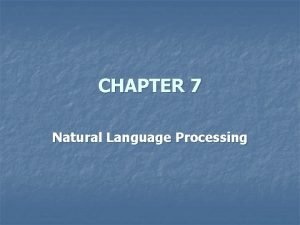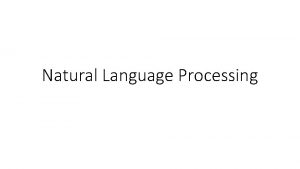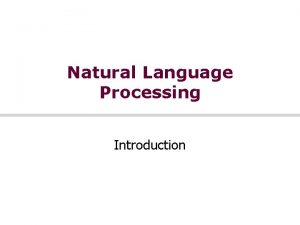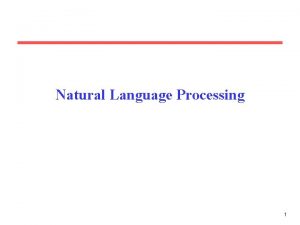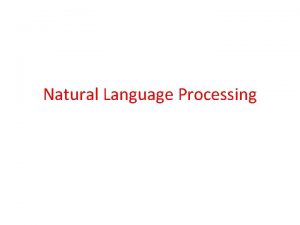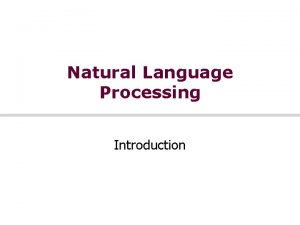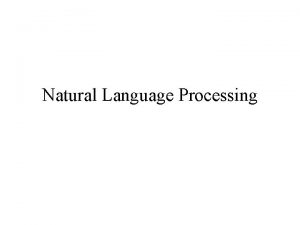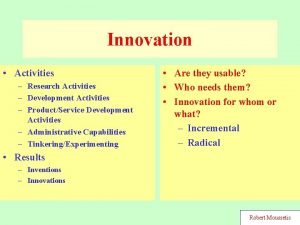1 2 Language Processing Activities The fundamental language















- Slides: 15

1. 2 Language Processing Activities • The fundamental language processing activities divided into two parts. 1. Program generation activities 2. Program execution activities [Prog. Generation] Specification Gap Application Domain [Prog. Execution] Execution Gap PL Execution Domain 1

Language Processing Activities • A program generation activity aims to generation of a program. Source is the application domain and target is the PL domain. It bridges specification gap. • A program execution activity aims to execute a program written in PL. source is PL domain and target is execution domain. It bridges execution gap. 2

1. Program Generation Errors Program Specification Program Generator Program in target PL • The program generator is a software system which accepts the specification of a program to be generated and generates program in a the target PL. • This activity is done by program generator domain. 3

1. Program Generation • The generator domain is close to the application domain, it is easy for the designer or programmer to write the specification of the program to be generated. • A program generator is software that enables an individual to create a program with less efforts and prog. Knowledge. • A user may only be required to specify the step or rules required for the program and not need to write and code or less code. 4

2. Program Execution • Two popular models for program execution are: 1. Program Translation 2. Program Interpretation 5

2. 1 Program Translation Errors Source Program Translator m/c language program Target Program • The program translation model bridges the execution gap by translating a program written in a PL called source program(SP), into an equivalent program in the machine language called target program(TP) 6

2. 1 Program Translation • Characteristics of the program translation model are: ü A program must be translated before it can be executed. ü The translated program may be saved in file. The saved program may be executed repeatedly. ü A program must be retranslated following modifications. 7

2. 2 Program Interpretation • It reads the source program and stores it in its memory. • During interpretation it takes a source statement, determines its meaning, and performs actions like computation and I/O which implement it. 8

2. 2 Program Interpretation • In the program interpretation, the CPU use a program counter(PC) to note the address of the next instruction to be executed. This instruction is subjected to the instruction execution cycle consisting following step: 1. Fetch the instruction 2. Decode the instruction to determine the operation to be performed. 3. Execute the instruction. 9

2. 2 Program Interpretation • At the end of the cycle. The PC is updated and the cycle is repeated for the next instruction. • Thus, the PC can indicate which statement of the source program is to be interpreted next. Interpreter Memory CPU Memory PC Source PC M. L. Errors Program + + Data 10

MCQ • The _____ is a software system which generates a program in the target PL. A. Program Generator B. Program Specification C. Program Execution D. program Interpretation

MCQ • The _____ is a software system which generates a program in the target PL. A. Program Generator B. Program Specification C. Program Execution D. program Interpretation

MCQ • the CPU use ______ to note the address of the next instruction to be executed. A. program counter(PC) B. Pretty printer C. static checker D. None

MCQ • the CPU use ______ to note the address of the next instruction to be executed. A. program counter(PC) B. Pretty printer C. static checker D. None

MCQ • The Program generator _______ to convert _____ • The _____ fetch, decode and execute instruction
 Program generation activity aims at
Program generation activity aims at What are language processing activities
What are language processing activities The range of values spanned by the gray scale is called
The range of values spanned by the gray scale is called Components of digital image processing
Components of digital image processing Operating activities vs investing activities
Operating activities vs investing activities Which of these sports are indoor
Which of these sports are indoor Support activities and primary activities
Support activities and primary activities Primary activities and tertiary activities
Primary activities and tertiary activities Components of transaction processing system
Components of transaction processing system Top-down processing vs bottom-up processing
Top-down processing vs bottom-up processing Gloria suarez
Gloria suarez Top-down processing vs bottom-up processing
Top-down processing vs bottom-up processing Neighborhood processing in digital image processing
Neighborhood processing in digital image processing Secondary processing
Secondary processing Point processing in image processing
Point processing in image processing Histogram processing in digital image processing
Histogram processing in digital image processing



